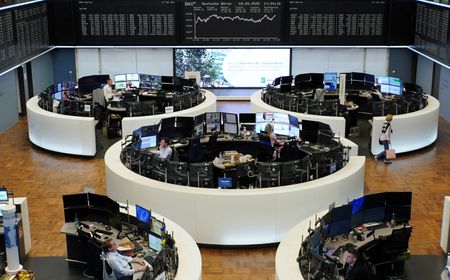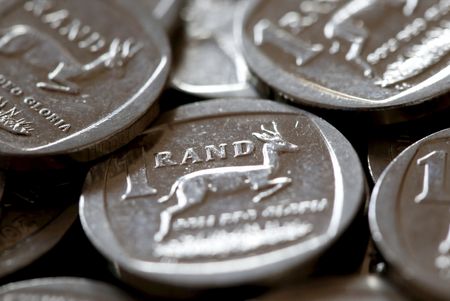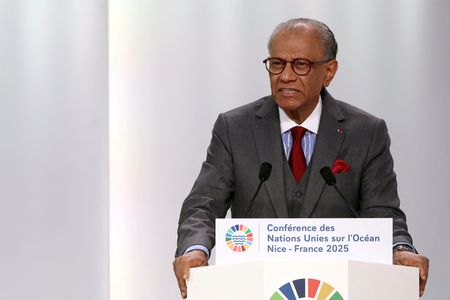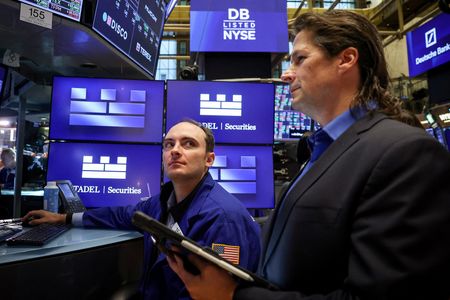By Nell Mackenzie and Ankur Banerjee
LONDON/SINGAPORE (Reuters) -European markets ticked lower on Monday, dragged by automakers’ profit warnings, while the dollar steadied as markets waited to see if optimism over the Federal Reserve’s easing monetary policy might be offset by geopolitical concerns.
The pan-European STOXX 600 was little changed, with Spanish and German stocks down 0.6% and 0.5%, respectively.
Luxury carmaker Porsche its parent Volkswagen both cut their profit forecasts after delaying the rollout of EV models due to weak demand.
Meanwhile, MSCI’s broadest index of world stocks was little changed while India’s benchmark index slipped 0.2% after the Trump administration said it would ask companies to pay $100,000 for new H-1B worker visas, a blow to the tech sector that relies on skilled workers from India and China.
In China, stocks were choppy even as U.S. President Donald Trump said he and Chinese President Xi Jinping had made progress on a TikTok agreement.
The Shanghai Composite index .SSEC was up 0.2% while the blue-chip CSI300 index also rose 0.5%.
India’s $283 billion information technology sector, which gets more than half its revenue from the U.S., will likely feel the pain in the near term.
Trump last month doubled tariffs on imports from India to as much as 50%, partly due to New Delhi’s purchases of Russian oil.
“It’s a risk to operating costs and margins first of all. Obviously it could raise wages and labour costs a bit,” said Kyle Rodda, senior financial analyst at Capital.com
“Tech companies may also find themselves in a bind where they confront punitive measures if they look to offshore labour because they can’t find enough workers in the U.S.”
FED POLICY OUTLOOK
On the macroeconomic front, investors remain keen to gauge the U.S. monetary policy path after the Fed indicated a gradual easing phase in the future, with traders pricing in 44 basis points of easing in the two policy meetings left for the year.
A host of policymakers is expected to speak in the week including John Williams, Thomas Barkin and Stephen Miran on Monday, and Raphael Bostic and Michelle Bowman on Tuesday along with Fed Chair Jerome Powell.
“Now it’s time for central bankers to come out and explain everything,” said James Rossiter, head of global macro strategy at TD Securities, who hoped that over the next two days these remarks will help markets shape expectations more precisely.
Data on the Fed’s preferred gauge of inflation is due on Friday that will also help set the tone for the near-term rate outlook.
The expectation is for the core PCE price index to rise by 0.2% on a monthly basis, which would keep the annual rate steady at 2.9%, the same as in July, and above the 2.6% low it reached in April, according to Tony Sycamore, market analyst at IG.
“Although even a shallower rate-cutting cycle should, in theory, weigh on the U.S. dollar, the U.S. dollar short trade has become crowded,” Sycamore said, adding the dollar index has lost downside momentum in recent months after a torrid start.
The dollar index, which measures the U.S. currency against six other units, was down 0.2% at 97.54.
U.S. stock futures eased with the S&P and Nasdaq futures both down 0.2%.
The Japanese yen steadied at 147.87 per U.S. dollar after strengthening on Friday following the Bank of Japan’s hawkish hold where two board members voted against keeping interest rates steady.
Oil prices climbed amid heightened geopolitical tensions in Europe and the Middle East, with Brent crude futures 34 cents higher at $67.02 a barrel. U.S. West Texas Intermediate futures rose 36 cents to $63.04. [O/R]
Gold prices climbed, and were last up roughly 1% and at one point at a fresh record high of $3,719.65 per ounce. [GOL/]
(Reporting by Nell Mackenzie and Ankur Banerjee; Editing by Shri Navaratnam; Editing by Jacqueline Wong and Bernadette Baum)










